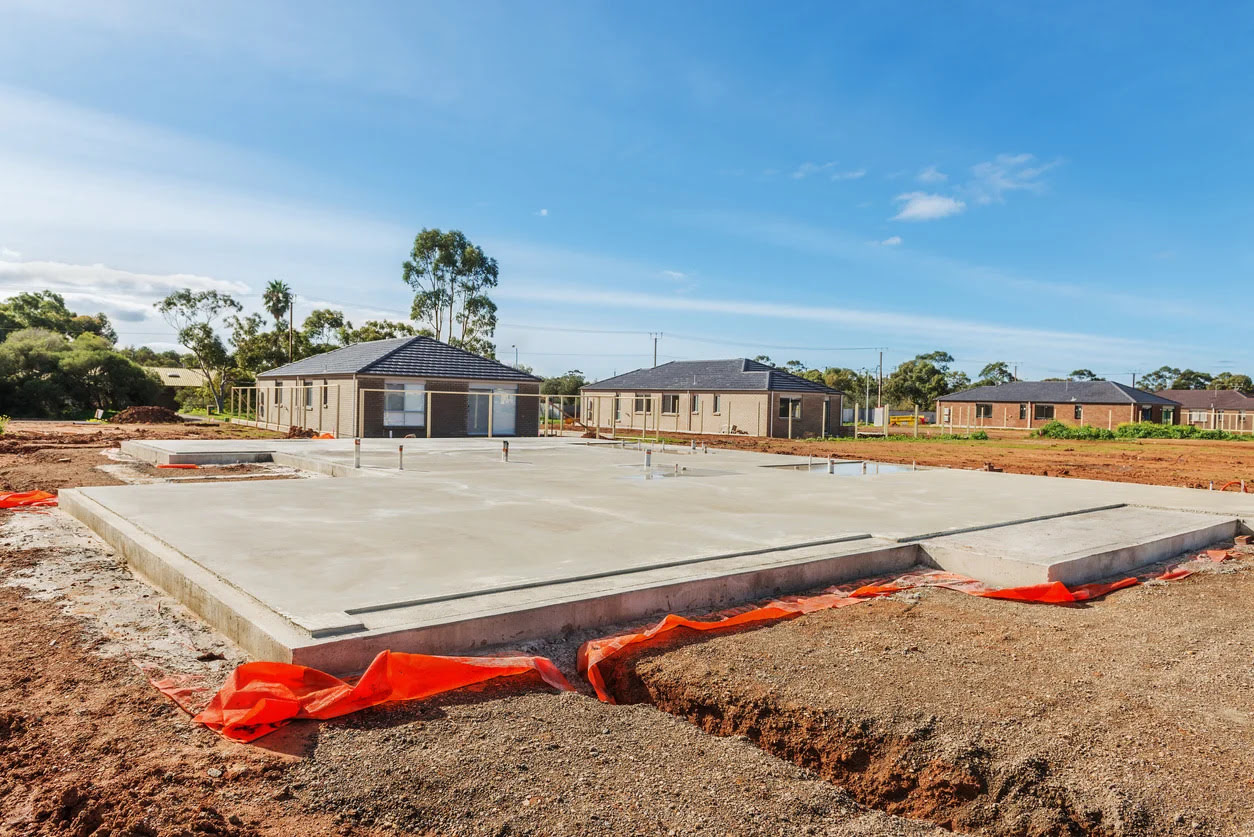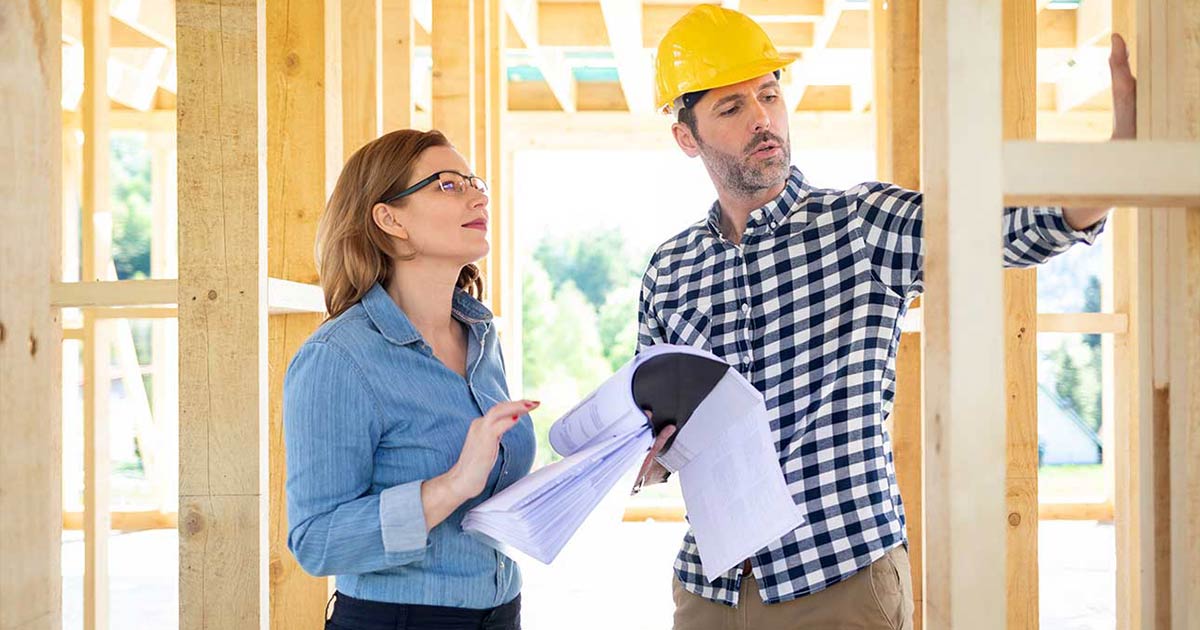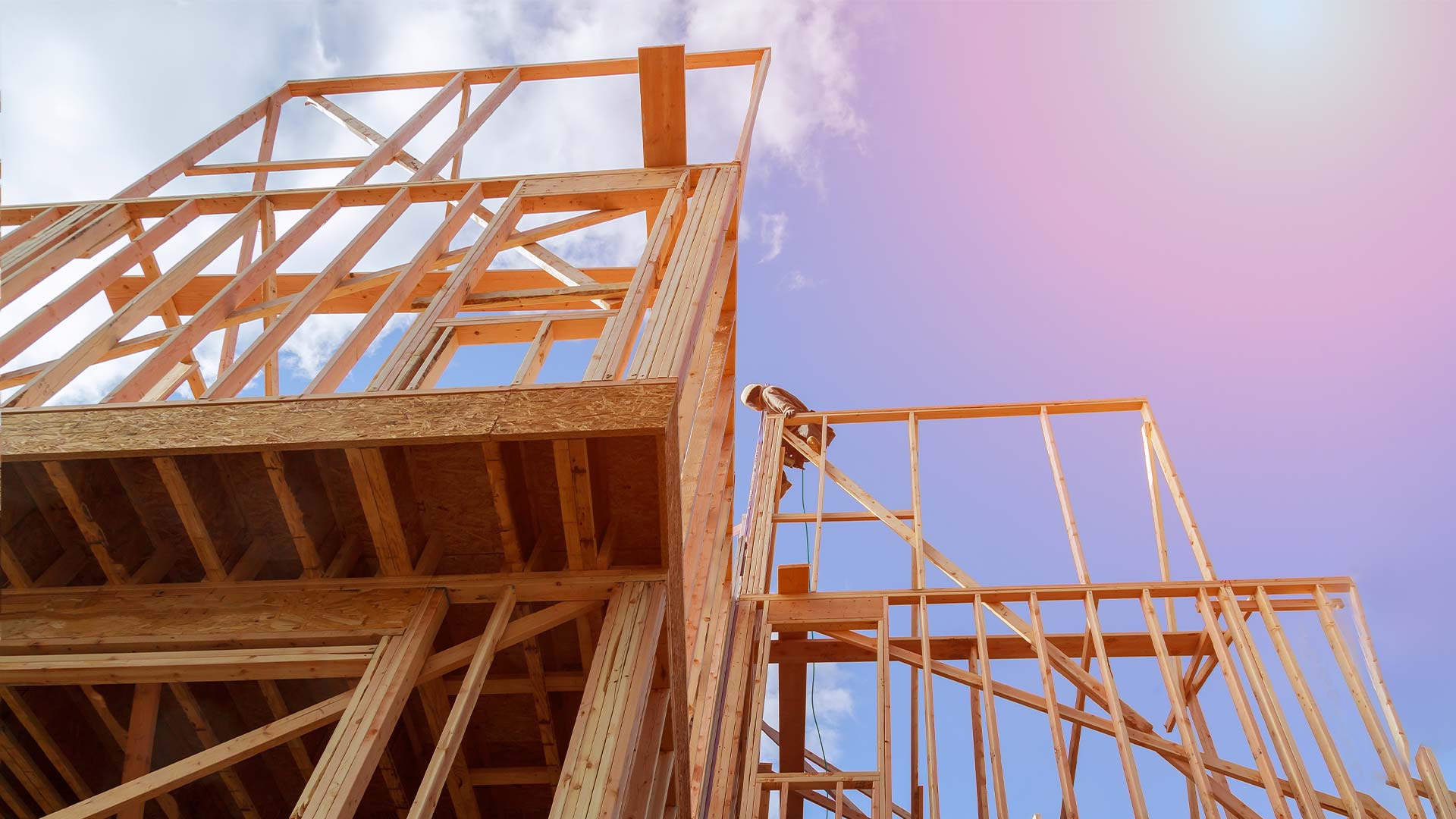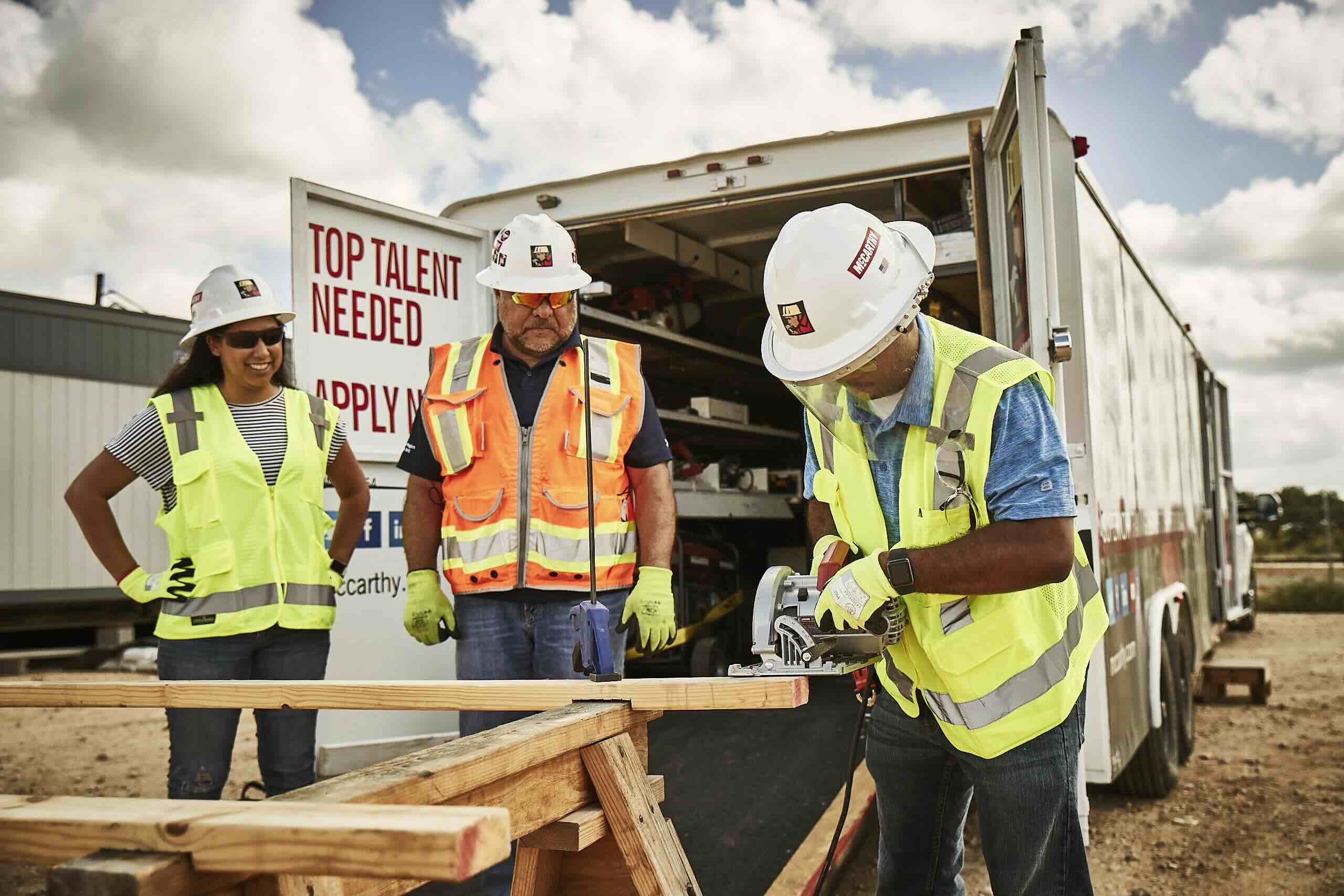Home>diy>Building & Construction>How Does A Construction Loan Work When Buying Land


Building & Construction
How Does A Construction Loan Work When Buying Land
Modified: February 25, 2024
Learn how a construction loan works when buying land for building construction. Get insights on the process, requirements, and financing options.
(Many of the links in this article redirect to a specific reviewed product. Your purchase of these products through affiliate links helps to generate commission for Storables.com, at no extra cost. Learn more)
Introduction
When it comes to building your dream home, one of the most important aspects is securing the necessary financing. This is where construction loans come into play. A construction loan is a specific type of loan designed to provide funding for the construction of a new home or building. But how does a construction loan work when buying land?
In this article, we will delve into the intricacies of construction loans and explore the role of land in this process. We will also discuss how to secure financing for land purchase, the steps involved in applying for a construction loan, managing payments during construction, and the completion and conversion of the loan. Finally, we will provide some helpful tips for a successful construction loan process.
Understanding the ins and outs of construction loans will not only help you navigate the financing process with confidence, but also ensure that your vision for your dream home becomes a reality on solid ground.
Key Takeaways:
- Understanding the role of land in a construction loan is crucial, as it serves as the foundation for the new building. Securing financing for land purchase and navigating the loan application process are essential steps in the construction loan journey.
- Effective management of construction loan draws and payments, along with careful planning and collaboration with experienced professionals, are key factors in ensuring a successful construction loan process. Thorough documentation, proactive inspections, and flexibility are also vital for navigating potential challenges.
Understanding Construction Loans
A construction loan is a temporary loan designed to provide funding for the construction of a new building, whether it’s a residential home or a commercial property. Unlike a traditional mortgage loan, which is used to purchase an already-existing property, a construction loan is specifically tailored for the construction phase.
Construction loans typically have a shorter term and higher interest rates compared to traditional mortgage loans. This is because construction loans are considered riskier for lenders, as they involve financing a property that does not yet exist.
One key aspect of construction loans is that they are usually disbursed in a series of draws or stages. These draws are made at key milestones during the construction process, ensuring that the builder has completed certain pre-determined stages of the project before receiving further funding.
It’s important to note that construction loans can be used for various types of construction projects, ranging from building a single-family home on an empty lot to renovating an existing property or constructing a commercial building.
Now that we have a basic understanding of what a construction loan is, let’s explore the role of land in the construction loan process.
The Role of Land in a Construction Loan
When it comes to a construction loan, the role of land is of utmost importance. The land serves as the foundation upon which the new building will be constructed. Without land, there would be no project to finance.
Before securing a construction loan, it’s essential to have a clear understanding of the land’s value and suitability for the intended construction. Factors such as location, size, zoning restrictions, access to utilities, and any potential environmental concerns should all be carefully considered.
The value of the land will influence the loan amount and terms offered by the lender. If the land is already owned outright, it may be used as collateral for the construction loan. If the land is being purchased as part of the construction loan process, the loan will finance both the land acquisition and the construction costs.
The lender will likely require an appraisal of the land to determine its worth and assess its suitability for construction. Additionally, they may require a title search and survey to ensure there are no legal issues or boundary disputes that could impact the project’s progress.
It’s important to note that not all lenders offer construction loans that include the purchase of land. In some cases, you may need to obtain separate financing for the land purchase before applying for a construction loan.
Once the land has been assessed and its value has been determined, it will become an integral part of the construction loan application process. The loan amount will factor in the cost of purchasing the land, as well as the estimated construction costs and any other associated expenses.
Now that we have a better understanding of the role of land in a construction loan, let’s explore how to secure financing for the purchase of land.
Securing Financing for Land Purchase
When it comes to purchasing land for your construction project, securing financing is a crucial step. Here are a few options to consider when looking to finance the purchase of land:
- Traditional lenders: Banks and credit unions are often the first place to turn when seeking financing for land purchase. They offer various loan options, including land loans specifically tailored for this purpose. These loans typically require a down payment and have specific terms and conditions, such as a shorter repayment period and higher interest rates compared to traditional mortgages.
- Government loans: Some government agencies, such as the U.S. Department of Agriculture (USDA) and the Department of Veterans Affairs (VA), offer loan programs specifically for land purchase. These loans often come with more flexible requirements and favorable terms for eligible borrowers.
- Owner financing: In some cases, the seller of the land may be open to providing financing directly to the buyer. This arrangement, known as owner financing or seller financing, allows for more flexibility in terms and repayment options. However, it’s essential to carefully review the terms of the financing agreement before entering into this type of arrangement.
- Private lenders: Private lenders, such as investment firms or individuals, may provide financing options for land purchase. These lenders often have more lenient requirements and can offer innovative solutions tailored to your specific needs. However, interest rates and terms may vary significantly, so it’s important to thoroughly research and compare different options.
Whichever financing option you choose, it’s crucial to have a clear understanding of your budget and the associated costs of land purchase. Consider factors such as the purchase price, closing costs, property taxes, insurance, and any potential costs for land improvements or utilities installation.
Additionally, having a solid credit score, a stable income, and a detailed financial plan will enhance your chances of securing financing for land purchase. It’s advisable to shop around and compare different lenders to find the best terms and rates that align with your financial goals.
Once you have secured financing for the land purchase, you can move forward with the application process for a construction loan, which we will explore in the next section.
Applying for a Construction Loan
Applying for a construction loan requires careful planning and documentation. Here are the key steps involved in the application process:
- Gather necessary documents: Start by collecting all the necessary documentation to support your loan application. This typically includes proof of income, employment verification, tax returns, financial statements, credit history, and building plans and specifications.
- Find a lender: Research and compare different lenders that offer construction loans. Look for lenders with experience in construction financing and favorable terms. Consult with multiple lenders to get a sense of the options available and their specific requirements.
- Submit an application: Once you’ve chosen a lender, submit your loan application along with the required documents. The lender will review your application and documentation to assess your creditworthiness and evaluate the feasibility of the construction project.
- Provide a detailed construction plan: A comprehensive construction plan is essential for securing a construction loan. This plan should include details such as the timeline, budget, and scope of work. Having detailed plans and cost estimates from reputable contractors can improve the lender’s confidence in your project.
- Appraisal and underwriting process: The lender will conduct a thorough appraisal of the land and evaluate the construction plans. This process helps them determine the loan amount and the terms and conditions. Additionally, the lender will verify your financial information and perform a credit check as part of the underwriting process.
- Loan approval and closing: If your application is approved, the lender will issue a loan commitment letter outlining the terms and conditions of the loan. Upon accepting the loan offer, you will proceed with the closing process, where legal documents are signed, and funds are disbursed. Closing costs, such as loan origination fees and attorney fees, may apply.
It’s important to note that the application process for a construction loan can be more complex and time-consuming than for a traditional mortgage loan. The lender’s thorough evaluation of the construction plans, budget, and your financial standing is necessary to minimize their risk.
Once the construction loan is approved, you can move forward with your construction project. In the next sections, we will discuss the construction loan draw schedule and how to manage payments during the construction phase.
When applying for a construction loan to buy land, make sure to have a clear plan for the construction project, including a detailed budget and timeline. Lenders will want to see a solid plan before approving the loan.
Read more: How To Get A Loan For Land And Construction
Construction Loan Draw Schedule
One of the distinctive features of a construction loan is the draw schedule. A draw schedule is a predetermined timeline that outlines when and how funds will be disbursed during the construction process. This payment schedule ensures that the builder receives the necessary funds at specific stages of the project.
The draw schedule is typically divided into several draws or disbursements, with each draw representing a milestone or completed stage of construction. The specific milestones and the associated percentage of funds released will vary depending on the lender and the project’s scope.
Here is a typical construction loan draw schedule with accompanying milestones:
- Foundation completion: This initial draw is released upon the completion of the foundation of the building. Generally, it covers a percentage of the total loan amount, often around 10% to 15%.
- Frame and roofing: The next draw is typically released once the building’s framework is completed, including the walls, roof, and other structural components. This stage represents a significant milestone and often accounts for about 20% to 25% of the loan amount.
- Enclosing the building: This draw is released once the building is enclosed, meaning that exterior walls, windows, doors, and insulation have been installed. It generally covers 15% to 20% of the loan amount.
- Interior completion: The interior completion draw marks the stage where the interior finishes, such as flooring, plumbing, electrical, and HVAC systems, are installed. This milestone typically represents 20% to 25% of the loan amount.
- Final completion: The final draw is released when the construction is completed and the building is ready for occupancy. This last draw covers the remaining balance of the loan, accounting for approximately 15% to 20% of the total amount.
In addition to these milestone draws, the lender may also require inspections and documentation to verify the completion of each stage before releasing the funds. It’s important to work closely with your builder and adhere to the agreed-upon timeline to ensure a smooth and timely disbursement of funds.
Managing the construction loan draws effectively is crucial for proper cash flow throughout the project. In the next section, we will explore how to manage payments during the construction phase.
Managing Payments during Construction
During the construction phase, managing payments is a critical aspect of the construction loan process. Proper management ensures that funds are allocated efficiently and that the project stays on track. Here are some key tips for managing payments during construction:
- Establish a dedicated account: Open a separate bank account specifically for the construction project. This account will be used to receive and disburse funds, making it easier to track and manage payments.
- Monitor the draw schedule: Keep a close eye on the construction loan draw schedule, ensuring that each payment aligns with the completion of the stipulated milestones. Work closely with your builder, lender, and any required inspectors to verify that the necessary criteria have been met before authorizing a draw.
- Maintain accurate records: Document all financial transactions related to the construction project meticulously. Keep records of invoices, receipts, and any other relevant payment documents. This level of organization will facilitate future audits and provide clarity regarding the project’s financial status.
- Disburse payments promptly: Once the lender authorizes a draw, ensure that payments to contractors, suppliers, and subcontractors are made promptly and accurately. Prompt payments promote positive relationships with construction professionals and help maintain project momentum.
- Track expenses and budget: Continuously monitor and update your project’s budget, keeping track of all construction-related expenses. Regularly compare your actual spending against the budgeted amounts to identify any discrepancies or potential cost overruns.
- Communicate effectively: Maintain open lines of communication with your builder, lender, and other parties involved in the construction project. Regularly update them on the progress, any changes in plans or budgets, and any potential issues that may impact payment schedules.
- Consider contingency funds: Construction projects often encounter unforeseen costs or changes in plans. It’s a good idea to set aside contingency funds to handle unexpected expenses that may arise during construction. This helps ensure that you can manage payments without derailing the project.
By following these guidelines and staying organized throughout the construction phase, you can effectively manage payments, maintain financial control, and keep the project on schedule and within budget.
Once the construction project is successfully completed, it’s time to address the final phase of the construction loan process – the completion and conversion of the loan. We will explore this in the next section.
Completion and Conversion of Construction Loan
After the construction of your dream home or building is complete, the next step is to address the completion and conversion of your construction loan. Here’s what you need to know:
Final Inspection and Certification: Before the loan can be converted into a permanent mortgage or closed out, a final inspection of the property is typically required. This inspection ensures that the construction has been completed according to the approved plans and meets all applicable building codes and regulations. Once the property passes the final inspection, a certificate of occupancy or its equivalent may be issued.
Transition to Permanent Financing: At this stage, you have two options to consider for converting your construction loan into permanent financing. The first option is to convert the construction loan into a traditional mortgage loan. This involves finalizing the terms and closing out the construction loan, and then transitioning to a long-term mortgage with suitable repayment terms.
The second option is to pursue a construction-to-permanent loan, also known as a “one-time close” loan. This type of loan eliminates the need for a separate construction loan and permanent mortgage, streamlining the process into one loan product. With a construction-to-permanent loan, the interest rate and terms are determined upfront, and the loan automatically converts from the construction phase to a permanent mortgage upon completion of the project.
Closing Out the Construction Loan: Whether you choose a traditional mortgage or a construction-to-permanent loan, the next step is to finalize the paperwork and complete the closing process. This involves signing legal documents, paying any remaining fees or closing costs, and officially converting the construction loan into a permanent mortgage.
During the closing process, it’s important to review all documents carefully, ensuring that the terms and conditions align with your expectations and financial goals. This is also an opportunity to address any outstanding issues and clarify any remaining concerns.
Once the construction loan has been closed out, you will have successfully transitioned from the construction phase to long-term financing, providing you with the stability and security of a permanent mortgage.
By understanding the completion and conversion process of your construction loan, you can effectively navigate the final stages of the loan and move forward with confidence as a proud owner of your newly constructed property.
In the next section, we will provide some helpful tips to ensure a smooth and successful construction loan process.
Tips for a Successful Construction Loan Process
Embarking on a construction loan process can be a complex endeavor. To ensure a smooth and successful experience, consider the following tips:
- Plan and Budget Carefully: Before applying for a construction loan, thoroughly plan and budget your project. Take into account all costs, including land acquisition, labor, materials, permits, and contingencies. Having a detailed plan and budget will help you secure appropriate financing and manage funds effectively.
- Choose the Right Lender: Research and compare different lenders to find the one that best suits your needs. Look for a lender with experience in construction financing, favorable terms, and excellent customer service. A trusted lender will guide you through the process and provide valuable insights.
- Work with Experienced Professionals: Select a reputable builder, architect, and other professionals who have expertise in construction projects. Their knowledge and experience will ensure the project runs smoothly, adheres to regulations, and meets your expectations.
- Maintain Open Communication: Communication is key throughout the construction loan process. Regularly communicate with your builder, lender, and other parties involved, keeping them informed of any changes or issues that may arise. This will foster collaboration and help resolve any potential challenges promptly.
- Keep Documentation Organized: Maintain meticulous records of all financial transactions, contracts, permits, and receipts related to the project. These documents will be crucial during the loan application process, draw schedule, and closing. Organized documentation will also assist with future audits or reference purposes.
- Be Proactive with Inspections: Stay proactive with inspections and ensure construction milestones are met before authorizing draw payments. Regular inspections will help identify any potential issues early, allowing for timely resolutions to maintain the project’s progress and quality.
- Stay Involved in the Process: While relying on professionals is essential, staying actively involved in the construction process is equally important. Visit the construction site regularly, ask questions, and seek regular updates from your builder. Your involvement will foster a sense of ownership and ensure your vision is realized.
- Prepare for Contingencies: Construction projects can be unpredictable. Set aside contingency funds to address unexpected expenses or changes in plans. This buffer will help mitigate financial stress and ensure that the project remains on track, even in the face of unforeseen challenges.
- Stay Patient and Flexible: Construction projects require time and patience. Delays and unexpected issues can arise, so it’s essential to remain flexible in your expectations and work closely with your builder and lender to navigate any roadblocks that may emerge.
By following these tips, you can increase the likelihood of a successful construction loan process. Remember, thorough planning, effective communication, and collaboration with professionals will contribute to a seamless and satisfying journey towards the completion of your dream project.
To conclude, a construction loan provides the financial foundation for turning your dream home or building into a reality. With a strong understanding of the loan process, the role of land, and effective management of payments and inspections, you can embark on your construction project with confidence and watch your vision come to life.
Read more: How Does A Construction Loan Work
Conclusion
A construction loan is a vital financial tool that allows you to build your dream home or building. Understanding how a construction loan works when buying land is crucial to navigating the process successfully.
Throughout this article, we have explored the various aspects of construction loans, including the role of land, securing financing for land purchase, applying for a construction loan, the construction loan draw schedule, managing payments during construction, and the completion and conversion of the loan.
By carefully considering these elements, you can ensure a smooth and successful construction loan process. Planning and budgeting diligently, choosing the right lender, working with experienced professionals, maintaining open communication, keeping documentation organized, and being proactive with inspections are just some of the key tips we have discussed.
Throughout the journey of constructing your dream home, remember to stay patient and flexible. Understand that challenges may arise, and adjustments may need to be made. However, with the right planning, teamwork, and communication, you can overcome these challenges and bring your vision to life.
Building a home or structure is a significant undertaking, and a construction loan provides the financial assistance necessary to turn your dream into a reality. With careful consideration, proper management, and adherence to the loan process, you can navigate the construction loan process with confidence, ensuring that your project is completed on time and within budget.
Now armed with a comprehensive understanding of the construction loan process, it’s time to start your journey towards creating the home or building of your dreams. Remember to seek guidance from professionals, maintain open communication, and enjoy the process of building something truly special.
Frequently Asked Questions about How Does A Construction Loan Work When Buying Land
Was this page helpful?
At Storables.com, we guarantee accurate and reliable information. Our content, validated by Expert Board Contributors, is crafted following stringent Editorial Policies. We're committed to providing you with well-researched, expert-backed insights for all your informational needs.














0 thoughts on “How Does A Construction Loan Work When Buying Land”